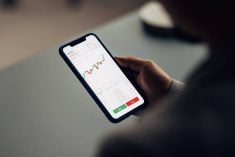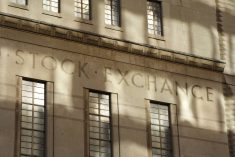While the world of stock investing is misunderstood, this pales in comparison to misunderstanding around leverage or options. Leverage is the use of borrowed money to accelerate the purchase of a larger asset than you could purchase with cash. It is often possible to purchase real estate with as little as 10 per cent of the actual purchase price. Leverage multiplies the impact of the gain or loss in the underlying asset. For example, if a $100 asset purchased with $10 down appreciates by 10 per cent to $110, the equity is doubled to $20. However, if the underlying asset depreciates by 10 per cent to $90, all equity is lost.
Read Also

Gentle treatments for pain in the neck
Heading toward year-end, people unknowingly tense up against the cold and busyness, causing neck pain that can often be treated with appropriate support and gentle mobility, athletic therapist Kathlyn Hossack says.
It perplexes me that it is perceived to be wise to buy a house with 90 per cent leverage, but foolish to use even 10 per cent leverage with stock investments. I used borrowed money, also referred to as margin, extensively in the past but tired of the interest payments. About 10 years ago I switched to using options as my pry-bar. Options work the same with stocks as they do with agricultural commodities. There are puts and calls, and you can buy or sell either. Warning: Options should not be attempted until a significant track record of success with stocks has been achieved.
Buying stocks at a lower price
My option strategy of choice is the sale of puts. When a put is sold, the purchaser has the right to sell you the stock at a predetermined price, the strike price, anytime up to the expiry date. They pay a premium for this right, otherwise why would you agree? The amount paid is determined by a competitive bid and ask process, just like purchasing stocks, except there is a bigger spread between the bid and ask prices. Option contracts are based on 100-share lots.
On April 29, 2016, I sold one put contract on 100 shares of Monsanto. The contract had a strike price of $100 and an expiry date of January 19, 2018. The purchaser of this contract could sell me, a.k.a. “put me,” 100 shares of Monsanto for $100 per share up to and including January 19, 2018. For this privilege they paid me $16.42 per share ($1,642 for the contract).
Monsanto was trading at $93.80 when I sold the put. If I got put the stock, it would have been at the strike price of $100. I had already received an option premium of $16.42, making my effective purchase price $83.58 ($100 – $16.42), or 10.9 per cent below the then-current price of Monsanto. Monsanto received a buyout offer causing its price to increase beyond the $100 strike price, so the option expired, worthless. I profited $1,642. Pretty cool eh! (I’ve omitted brokerage fees to make the math easier.)
What could have gone wrong? The worst-case scenario would have been for Monsanto to go broke before the option expiry date. I would have been put and lost $83.58 per share. I have learned through “the school of hard knocks” to only sell puts on companies that are highly unlikely to go broke and only those I am comfortable purchasing and holding, should I get put the stock.
Good stock selection is key. Occasionally I get put the stock, which I hold. Sometimes I buy the option out at a profit, and a few times I’ve had to buy them out at a loss. The vast majority of times they have expired worthless, and I’ve kept the entire premium.
This strategy works great in flat to up markets, which has been the case in 73 per cent of recent years, as I demonstrated in a chart in last issue’s column. It can be modestly positive or negative when the markets are down from zero to 20 per cent. The strategy only stings when the market is down 20 per cent or more, which has been six per cent of the time. I am not a gambler so I like something that typically works 73 per cent of the time.















